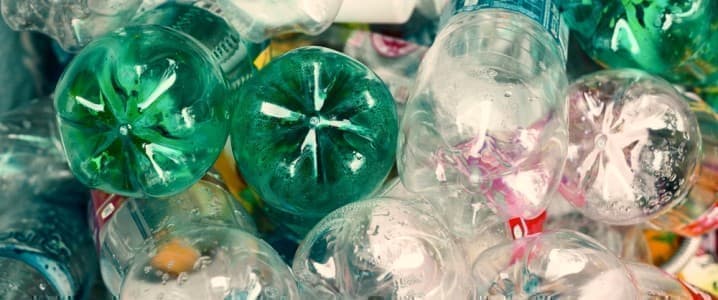
By Brian Westenhaus – Dec 17, 2022, 2:00 PM CST
- Amsterdam researchers have made a major leap forward in the production of biobased polyesters.
- The breakthrough could ultimately pave the way for commercial bioplastics.
- Bioplastics offer a promising alternative to petroleum-based plastics.
Researchers at Universiteit van Amsterdam made an important step towards the production of fully biobased, rigid polyesters. The process replaces petroleum in the production of very strong and durable biobased plastics from building blocks that are already commercially available.
In a recent paper published in Nature Communications, researchers at the Industrial Sustainable Chemistry group led by Prof. Gert-Jan Gruter presented a simple, yet innovative, synthesis strategy to overcome the inherently low reactivity of biobased secondary diols and arrive at polyesters that have very good mechanical- and thermal properties, and at the same time high molecular weights.
The research was carried out within the RIBIPOL project funded by the Dutch Research Council NWO with contributions from industry, notably LEGO and Avantium. The LEGO toy company supported the project as part of the search for non-fossil alternatives for its plastic bricks. Avantium is interested in bottle- and film applications.
First author of the paper is PhD student Daniel Weinland, who graduated on October 27th, 2022 . In total, 5 PhD students are involved in the RIBIPOL project, of which 2 have defended their thesis recently.
In general, polyester plastics are synthesized from small dialcohol and diacid molecules. These monomers are coupled in a condensation reaction, resulting in a long polymer chain of molecular building blocks in an alternating fashion. The macroscopic material properties result both from the number of building blocks that make up the polymer chain, and from the inherent properties of the monomers. In particular their rigidity is key to a firm, strong and durable plastic. In this regard, the glucose-derived dialcohol isosorbide is unique among potential biobased monomers. It has a very rigid molecular structure and is already industrially available.
However, isosorbide is rather unreactive, and in the past two decades it has proven quite challenging to obtain useful isosorbide-based polyesters. It was nearly impossible to arrive at sufficiently long polymer chains (to achieve a certain ductility) while incorporating sufficiently high amounts of isosorbide (to arrive at a strong and durable material).
Incorporating an aryl alcohol
Weinland and his RIBIPOL colleagues have overcome this impasse by incorporating an aryl alcohol in the polymerization process. This leads to in situ formation of reactive aryl esters and a significant enhancement of the end group reactivity during polycondensation, the last stage of polyester synthesis when isosorbides low reactivity inhibits chain growth in traditional melt polyesterification.
As a result, high molecular weight materials could be produced with incorporation of high fractions of the biobased, rigid secondary diol, even up to 100 mol%. For the first time high molecular weight poly(isosorbide succinate) could be produced, the polyester obtained from isosorbide and succinic acid.
The resulting strong plastics outperform existing plastics like PET in terms of heat resistance, which is for instance relevant for reuse – think of washing bottles that takes place at a scalding 85° C. The isosorbide-based polymers also show promising barrier and mechanical properties that can outperform common fossil-based materials.
The novel polymerisation approach described in the paper is characterized by operational simplicity and the use of standard polyester synthesis equipment. It suits both existing and novel polyester compositions; the researchers foresee exploration of previously inaccessible polyester compositions based on monomers with a low reactivity but also the application of similar methods in other classes of polymers such as polyamides and polycarbonates.
***
A quite noteworthy amount of the world’s petroleum production is destined for producing plastics. While this breakthrough isn’t on a grand scale or encompass a massive share of the plastics made right now it does crack the door open for more biobased rather than fossil based feedstocks.
While the press release spared us a bunch of numbers about polyesters in the world’s economy they also didn’t describe any costs of production that would give us a sense of the practicality the research offers. One does hope that the production process is at least competitive.
There is likely some niches of market that will welcome the results. The assertion of great strength, even compared to the PET family of plastic is a very encouraging sign.
By Brian Westenhaus via New Energy and Fuel
More Top Reads from Oilprice.com:
- Ford’s Electric Pickup Is $15,000 More Expensive Than Its Original Listing Price
- Russia Ramped Up Military Satellite Launches In 2022
- When Will High Interest Rates Impact Car Demand?
Download The Free Oilprice App Today

Back to homepage
![]()
Brian Westenhaus
Brian is the editor of the popular energy technology site New Energy and Fuel. The site’s mission is to inform, stimulate, amuse and abuse the…
More Info
Related posts
Leave a comment


0 Comments :
Post a Comment